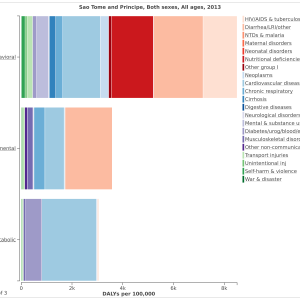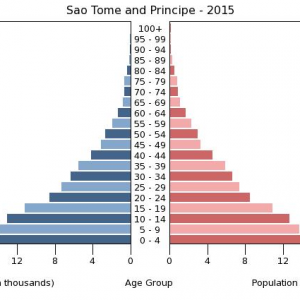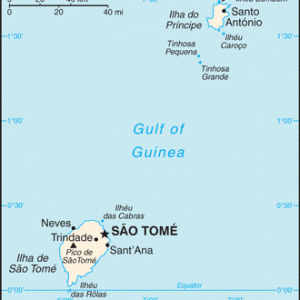|
The São Toméan Government has traditionally obtained foreign assistance from various donors, including the UN Development Programme, the World Bank, the European Union (EU), Portugal, Taiwan, and the African Development Bank. In April 2000, in association with the Banco Central de São Tomé e Príncipe, the IMF approved a poverty reduction and growth facility for São Tomé aimed at reducing inflation to 3% for 2001, raising ideal growth to 4%, and reducing the fiscal deficit.
There are only seven doctors in the country, with a hopsital in São Tomé. They make occasional visits to Principe Island as well. (WHO estimates that at least 2.5 physicians, nurses and midwives are needed to provide adequate care for 1,000 people.)

Malaria infection has been high, (currently 42.5 per 100,000 die from Malaria) especially during 2010. The HIV infection rate is unknown because of the great stigma attached, but is suspected to be high. About 30% of children are malnourished, and vitamin A, iron and iodine deficiency is widespread. A 2009 WHO study reveaeld that it had the highest prevalance of iron-deficiency anemia in the world.

The "World Factbook" population pyramid graphs the age and sex of the population. The infant mortality rate is 36.7 per 1,000 live births. Life expectancy is 66.5 years of age.

São Tomé & Príncipe is off the western coast of Equatorial Guinea and Gabon.
While São Tomé & Príncipe reportedly ranks high among African nations for progression to secondary schooling, the country's educational system is not adequately funded and is dependent upon foreign aid.
|